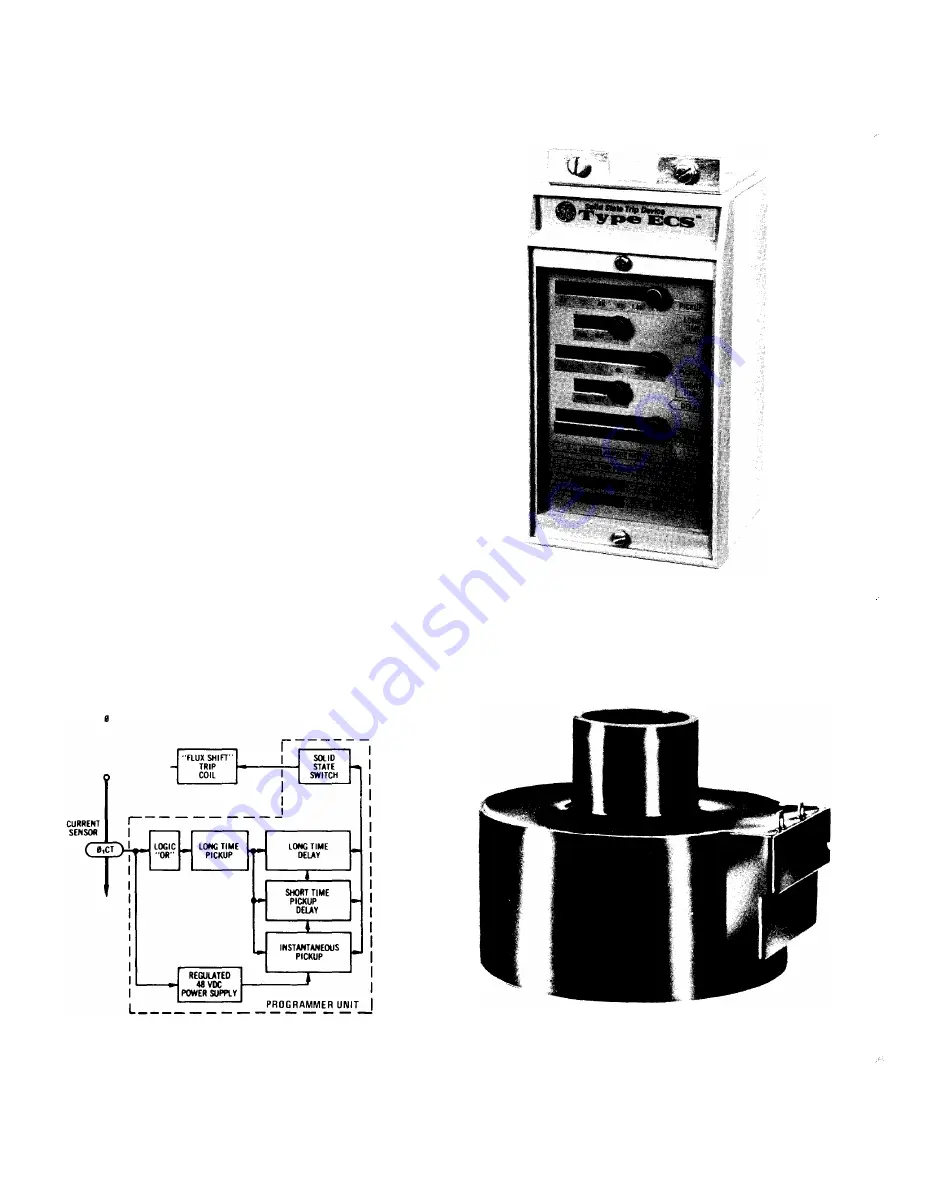
SECTION 1 1 -Type ECS Overcurrent Trip Device
The ECS is a sol id-state, d i rect-acting, self-powered
trip device system. The ECS system consists of the
ECS programmer u n i
f
shown in Fig. 72, current sensors,
and a flux shifter trip device. Fig. 73 shows a block
d i agram of the system.
The ECS trip system essential ly duplicates the SST
tri p system descri bed in Section 1 0 except for the
fol lowing:
1. Programmer units are l i m ited fo combinations of
Long Time, Short Ti me and instantaneous trip elements
on ly. The G round Fau lt element i s not available.
2. Phase sensors are not tapped. As l i sted in Table 9,
each sensor has only a single ampere rating. A d ifferent
sensor is avai lable for each of the tabulated ampere
ratings, which span the same range as SST, see Fig. 74.
3. Neutral sensors are not requ i red because there is
no G round Fault fu nction.
I n all other respects the ECS Tri p device system
operates and can be treated identical ly to SST. Th is in
cl udes circu itry, size, construct ion, component loca
t i o n , program mer u n i t set poi nts, performance
characteristics, operating range, qual ity, rel iabil ity and
the flux shift trip device. Use the same trou bleshooting
and test proced ures for single-phase, high current-low
voltage tests or those employing the TAK-TS1 or TAK
TS2 Test Sets. The G round Fault test procedu res, of
course, do not apply. ECS phase-sensor resistance
values are g iven i n Table 1 0.
The time-current characteristics for the ECS trip
device are given in curve G ES 6032.
1
)----
FIG. 73
-
ECS BLOCK DIAG RAM
56
FIG. 72
-
ECS P ROGRAMMER UNIT
FIG 74
-
ECS CURRENT SENSOR
www
. ElectricalPartManuals
. com
















































